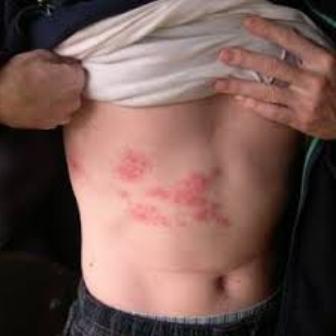Viral hepatitis: causes, signs of treatment
Viral hepatitis - inflammation of the liver by viraletiology. The disease can cause a variety of infectious diseases: AIDS, chicken pox, herpetic infection, etc. In all these cases, liver damage is only one of the few symptoms of the disease.
In medicine, however, under viral hepatitismeans a specific viral infection, in which liver damage is the main, marker of the disease. To date, there are several strains of viruses that can cause chronic viral hepatitis. Viruses that cause disease are usually designated by letters (A, B, C, D, etc.).
Viral hepatitis by the method of infection is dividedon two types: intestinal infection ("fecal-oral" way of infection), to this group is hepatitis A and E; blood infection (transmission pathway - blood or semen), the representative of this group is viral hepatitis B, C, D.
Viral hepatitis A. The most common intestinal infection, the incidence rate is directly related to the sanitary and hygienic state of the territory and the quality of drinking water. Everyone can get sick with viral hepatitis, children under 14 years old are three times more likely to get sick compared to adults. If the waterway of infection prevails, it is clear that the more people consume water, the more likely they are to become infected.
Viral hepatitis E. It resembles viral hepatitis A, but spreads most often in African and Asian countries. To infect hepatitis E, the body should receive the maximum infectious dose. This explains why hepatitis E is rarely infected by the domestic way (dirty hands).
Viral hepatitis B is transmitted by hematological andsexually. Every year about 50 million people suffer from it, more than 2 million die. Do not think that if you carefully choose the sex partners, then you will not get sick with hepatitis B. Infection sometimes occurs through passionate kisses or a common toothbrush. There were recorded cases when infection occurred during normal cosmetic procedures (tattooing, ear piercing, use of common razors, etc.). The incubation period can be up to six months. Quite often hepatitis B is complicated by cirrhosis of the liver.
Viral hepatitis: symptoms
The main signs of the disease include jaundice(icteric staining of mucous membranes and skin and skin), dark urine and light feces. Other clinical manifestations can be very diverse: abdominal pain, nausea, vomiting, hyperthermia, headache. To the great regret, the possibilities of modern medicine are not limited, patients with severe forms of the disease are treated for a long time in a hospital. Treatment is ineffective, quite complex and very expensive. With mild and moderate forms of the disease prescribed diet. Patients should consume easily digestible foods and sufficient amounts of water. Fats are excluded from the diet. The duration of such a diet should be at least six months. Doctors advise to eat in small fractions, in small portions, but often. Special processing of food (twisting, grating, cutting, grinding, etc.) improves its assimilation. It is better to eat food warmly. You can not drink carbonated drinks, eat fried, eat stimulants of appetite: sauces, seasonings, pickles, smoked products, as well as all sorts of marinades, chewing gum, coffee, chocolate, cocoa, mushrooms, canned food, muffins and ice cream.
During the period of exacerbation the patient needsabundant drink: compote of dried fruits, tea with honey or sugar, broth of wild rose, 5% glucose. You can eat shabby fruit, watermelon. When the condition improves - liquid porridge on the water, fruit juices, vegetable soups. After the disappearance of jaundice - low-fat cottage cheese, baked apples, low-fat varieties of fish and meat, vegetable purees.










